Many thanks to SWLing Post contributor, Mark Hirst, who shares the following guest post:
VOA Information Pack 1983
by Mark Hirst
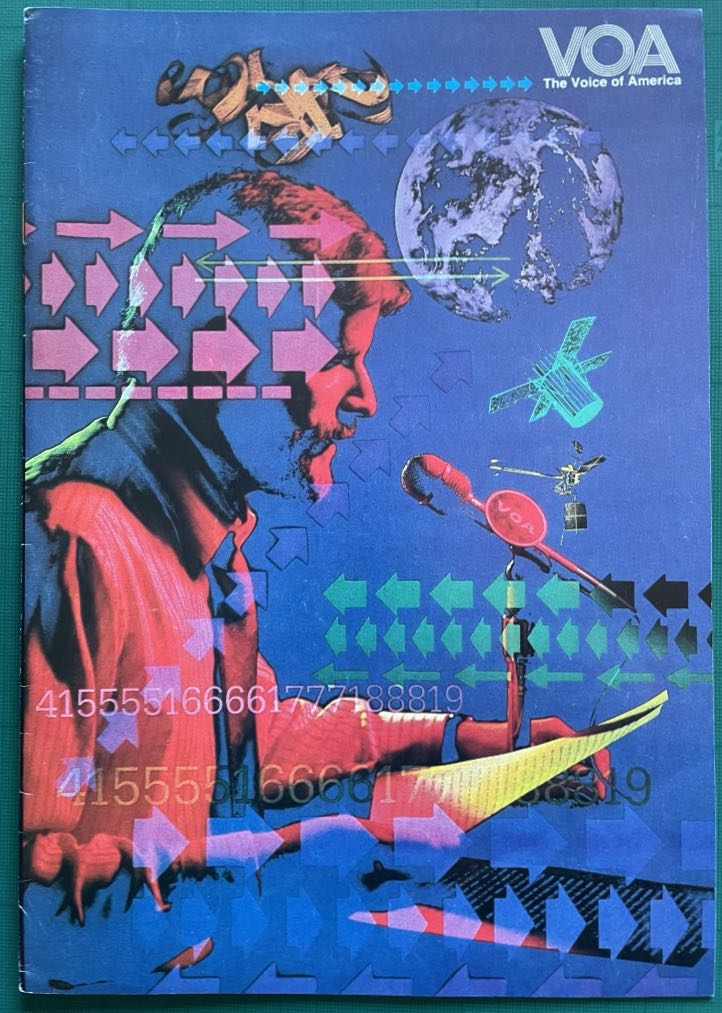 Introduction
Introduction
A recent guest post on this blog by Jock Elliott asked the question, ‘Why Listen to Shortwave?’
The comment I left at the time was my interest in how nations view themselves, and how they project that view to the world. This might be in the form of cultural exports like music, or teaching us about famous people or revered institutions in their country.
When I first started listening to shortwave in the early eighties, I never got into the habit of asking for QSL cards, being quite thrilled enough to receive programme guides in envelopes stamped with the postmark of other countries.
At the time, the primary stations for me included Radio Netherlands, Radio Sweden, Swiss Radio International, and the Voice of America. While most might send a small leaflet about their country with a frequency schedule, the information pack I received from the Voice of America stands head and shoulders above the others.
I thought readers might be interested in a brief description of this pack and with it a glimpse back into the world of 1983.
Please note that as you read the following sections, you can click on the images to view a larger version.
Package Contents
The package arrived in a manila envelope, with the logo and address of the VOA printed in the top left corner. In the top right corner is the logo of US Mail, with a declaration that postage and fees where paid for by the US Information Agency.
Package contents included:
- Compliments Card
- VOA Sticker
- Steering the Course Magazine
- VOA Magazine
- May-October 1983 Programme Schedule
VOA – The Voice of America
This guide begins by outlining the mission of the VOA, emphasising its aim to be an authoritative and reliable source of news.
In addition, it describes its role in presenting the policies of the United States through editorial content, as well as promoting “responsible discussion and opinion” on those policies.
The next section describes the gathering and dissemination of news across the 42 language services at that time, and has a photograph of the Operations Studio, known as the “Bubble”.
A page describing how VOA reports on “how America lives and works” is then followed by a two page spread asking for feedback, and noting its location on Independence Avenue, Washington DC.
Steering The Course
The crown jewel of the information pack is the 60 page guide covering the political process in the United States.
Reading it now, it feels like a product brochure for democracy, extolling its virtues and holding up the United States as a prime example. Doubtless it was created with the objective of promoting American interests at the time, but it doesn’t come across as propaganda.
As a non-American, I’m not able to judge if it is impartial, but its attempts to predict future outcomes from the perspective of 1983 is interesting reading now that we are living in that future.
Contents
Policymaking and Congressional Powers
This section begins by describing “Lawmaking as Congress” and outlines the need for rules, procedures, and conventions.
The article itself is an extract from the book Congressional Procedure and Policy Process by Walter Oleszek, explaining the rules by which Congress runs, how a bill is passed, and the pressures faced in formulating policy.
Portrait of a President
The author of this article is Stephen Hess, who served in two administrations at the White House.
He describes his portrait as being from the president’s perspective, contrasting the popular view that it is a powerful office against the reality of having to work against many constraints, competing groups, and outside events.
Describing how many presidents have no prior experience of executive office in the federal government, he outlines the difficult process of assembling a cabinet and assuming office.
The remainder of the article charts the milestones of a first term president, and the many pitfalls juggling foreign and domestic policies as a potential second term looms.
Congress and Foreign Policy
The author of this section is George Reedy, former press secretary to Lyndon B. Johnson.
It begins by describing the roles and relationships between the President and Congress over matters of foreign and domestic policy.
It highlights the way the division of powers is achieved in the United States, and how this approach is not generally replicated around the world. It even goes as far as labelling it as appearing “anachronistic” to outside observers.
Providing some historical context to how this complex arrangement of politics has come about, it then outlines the pressures and pitfalls of the Senate, Congress, and President supporting and opposing each other, citing the consequences or rewards of doing so.
The Policy Role of the Supreme Court
The author of this section is Archibald Cox, a professor of the Harvard Law School and described as an authority on constitutional law.
He begins by stating that the Judicial Branch of the US Government is to act as an arbiter of the Legislative and Executive branches, with its power defined by historical decisions rather than anything specific in the US Constitution.
In a section called “A matter of Interpretation” is a historical account of how the relationship between the court and legislative branch has changed, and the shifting trends and sense of activism amongst the court members.
The remainder of this article illustrates the changing role and influence of the court using examples such as segregation, distorted representation in voting districts, and rights of mental patients, with a particular focus on the case Brown v. Board of Education.
Special Section – How Laws are Created
The centre of the magazine takes the form of a special supplement, describing the process by which issues and concerns of the American people can ultimately become laws.
Two flow charts illustrate this process and these are shown below:
Amending the U.S. Constitution
Written by Barbara Katz, former reporter for The National Observer, she explains how the constitution can be changed, and examines the most significant of the then 26 amendments (there are 27 as of 1992).
The backdrop of the whole piece is the Equal Rights Amendment (ERA), and it’s long history dating back to the 1920’s.
Beginning with the first 10 amendments adopted in 1791, she explains that most of amendments are devoted to protecting or extending the rights of citizens, with the first 10 regarded as the most cherished.
Amendments starting with the 11th are then itemised with a brief explanation and date.
Pioneering Consumer Protection
This article outlines the roles of regulatory agencies in administering and enforcing policies of the federal government, citing examples such as the Federal Communications Commission (FCC) and Food and Drug Administration (FDA).
The bulk of the article focuses on the FDA, beginning by describing its creation to address the deplorable and dangerous state of food and pharmaceutical products in the early twentieth century.
Early enforcement was difficult, with examples including Sulfanilamide dispensed in liquid form which turned out to be toxic and deadly. The result of that episode was an act of Congress in 1938, which years later was used to block the approval of Thalidomide, a drug subsequently found to cause birth defects.
Federal-State Partnership
While much of the magazine concerns policy making at a national level, this article by Professor Daniel J. Elazar covers the role of states and communities in influencing national policy.
It states that there are three political principles of American federalism, contractual in nature, and deriving their legitimacy from the constitution:
- Non-centralisation
- Territorial Democracy
- Partnership
Each of these principles are examined in turn, touching many times on the diverse and often complex relationships of different territories, public and private sectors, various government institutions, hierarchies and non-hierarchies, and other factors.
Citizens Groups: Advocacy and Participation
This article by Jeffrey Berry of Tufts University in Massachusetts is an analysis of public interest groups, beginning by trying to define what a public interest group is or isn’t.
He uses three such groups to demonstrate the range and diversity of such groups, The Environmental Defence Fund, Common Cause, and organisations supported by Ralph Nader, and cites that the growth of interest groups is in part driven by falling satisfaction with government institutions.
He finishes by considering their accomplishments and if they will continue to be effective in the future.
How Effective are Citizen Groups in America
The last section is an interview with Dr Jeane Kirkpatrick, the then United States ambassador to the United Nations.
It begins by covering lobby groups, how they are organised, and the difficult balancing act of addressing the sometimes conflicting issues they represent.
Interestingly, the topic of funding and the effects of large contributions covers much of the rest of the interview, an issue then as it is today.
Conclusion
I’m amazed that this little piece of radio history has managed to remain with me in such good condition for nearly forty years. It feels very much a product of its time, generous, detailed, and quite academic in places. In our modern world with unrivalled access to information, it’s doubtful anything this lavish would be created again.

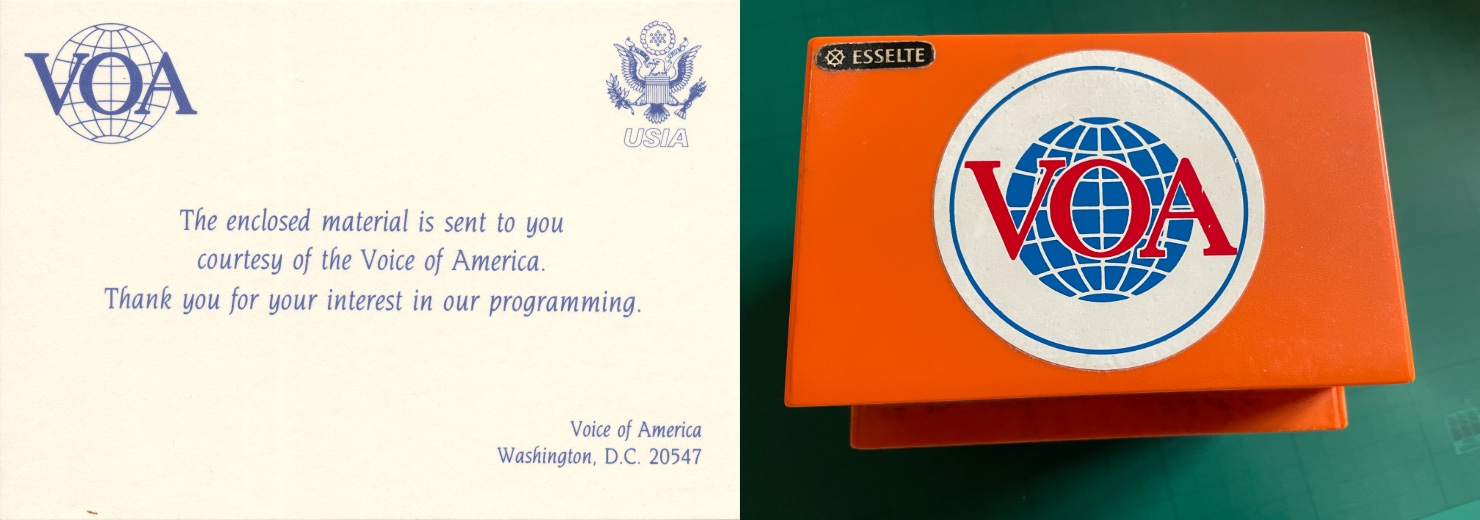
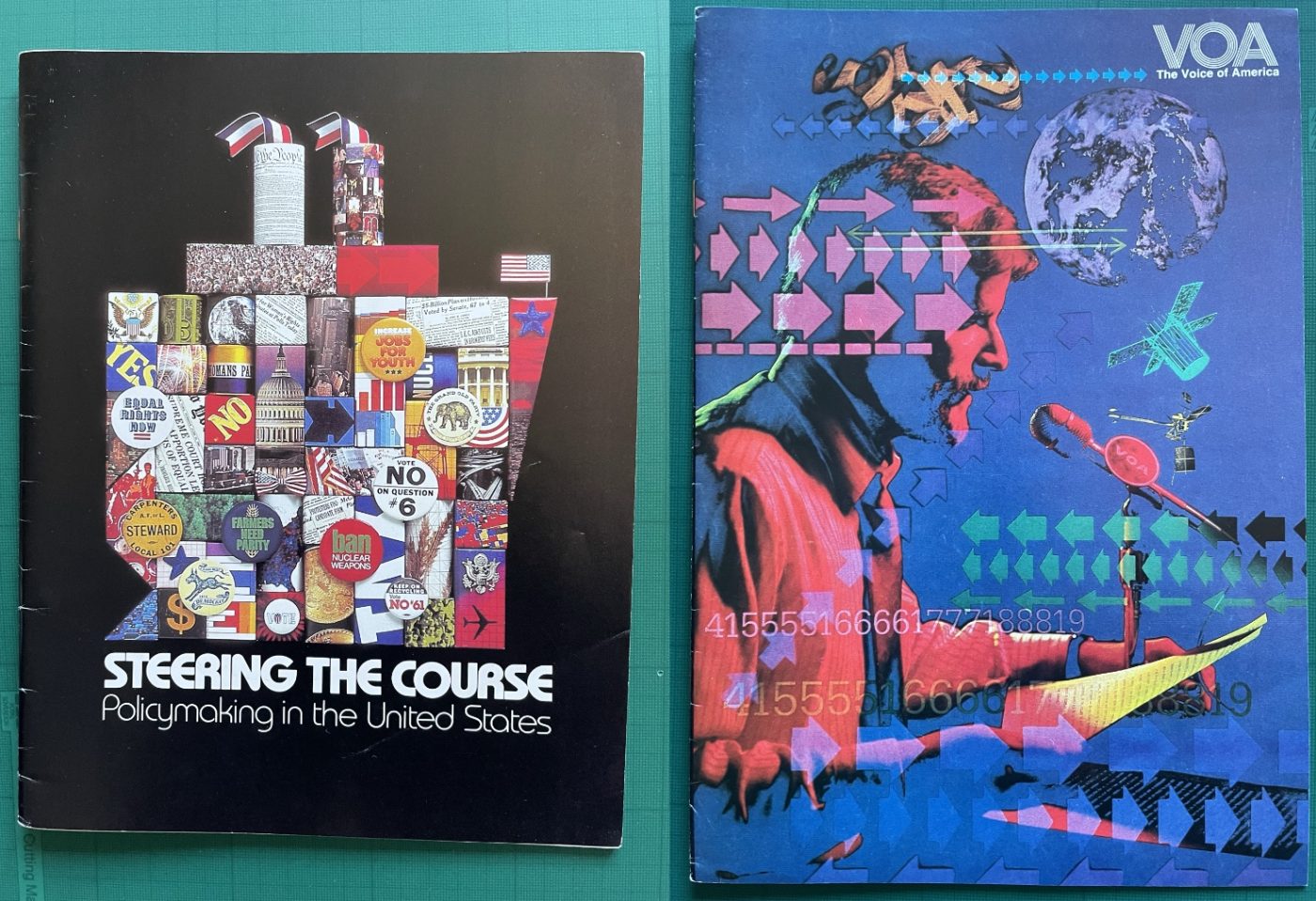
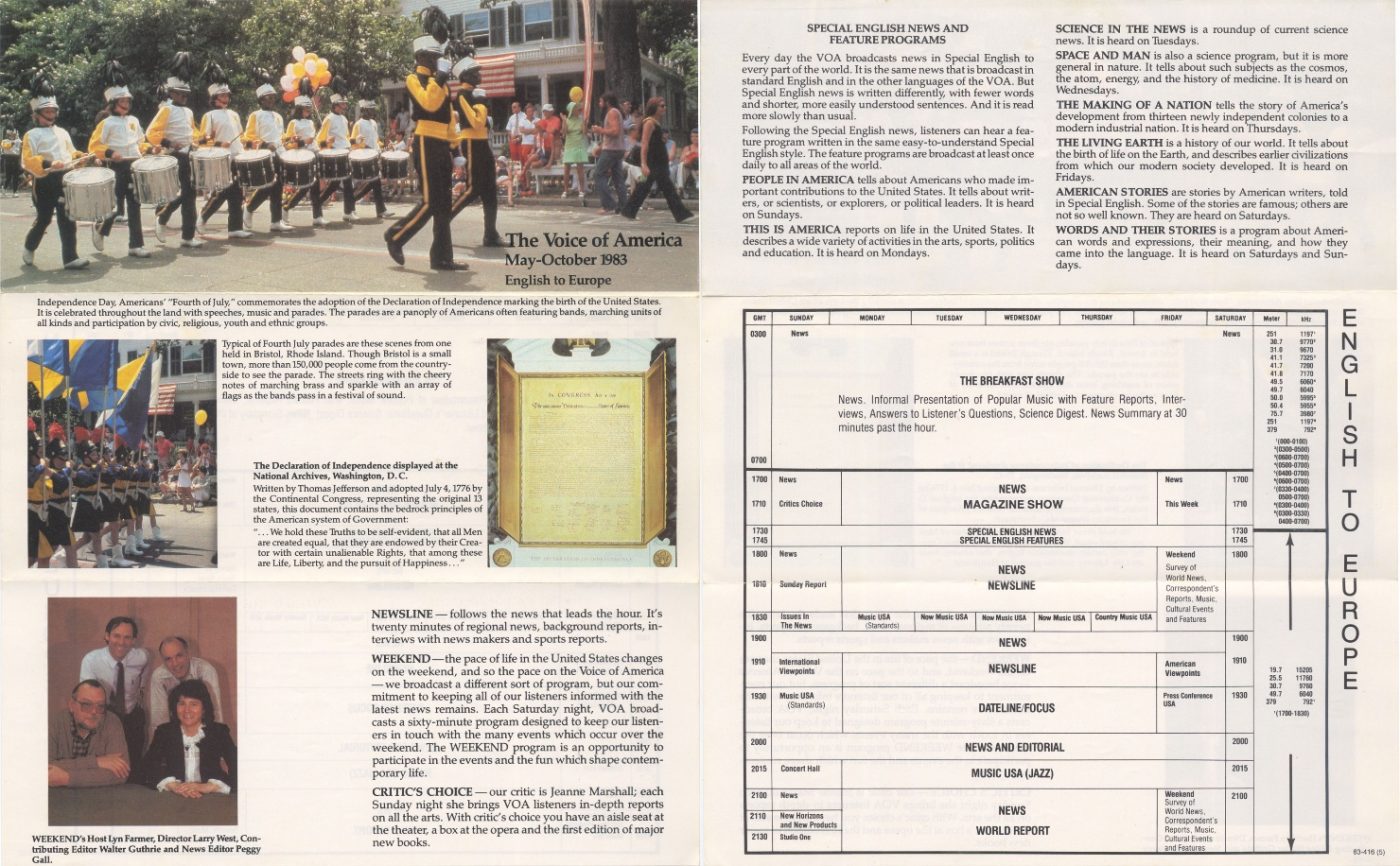
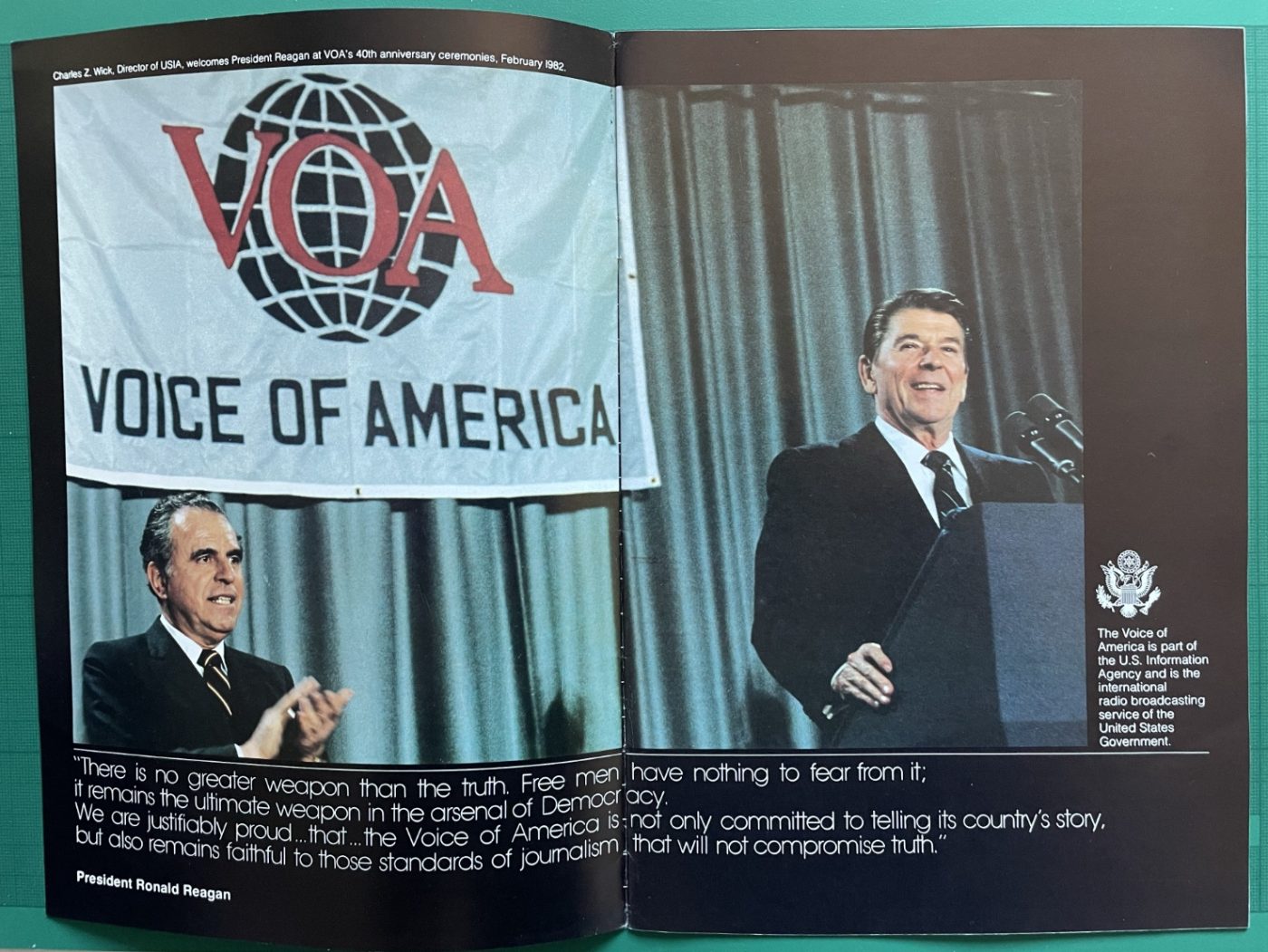
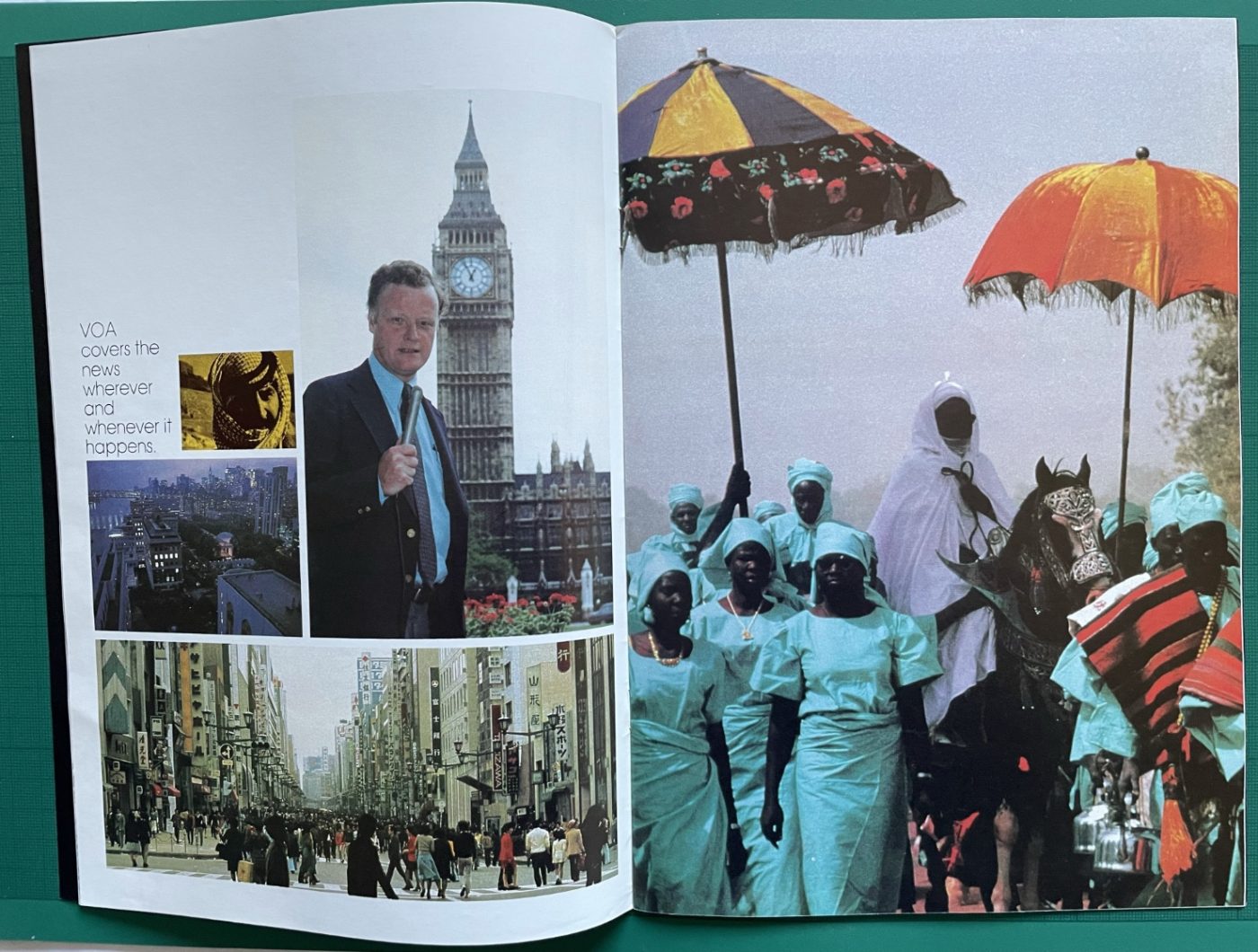
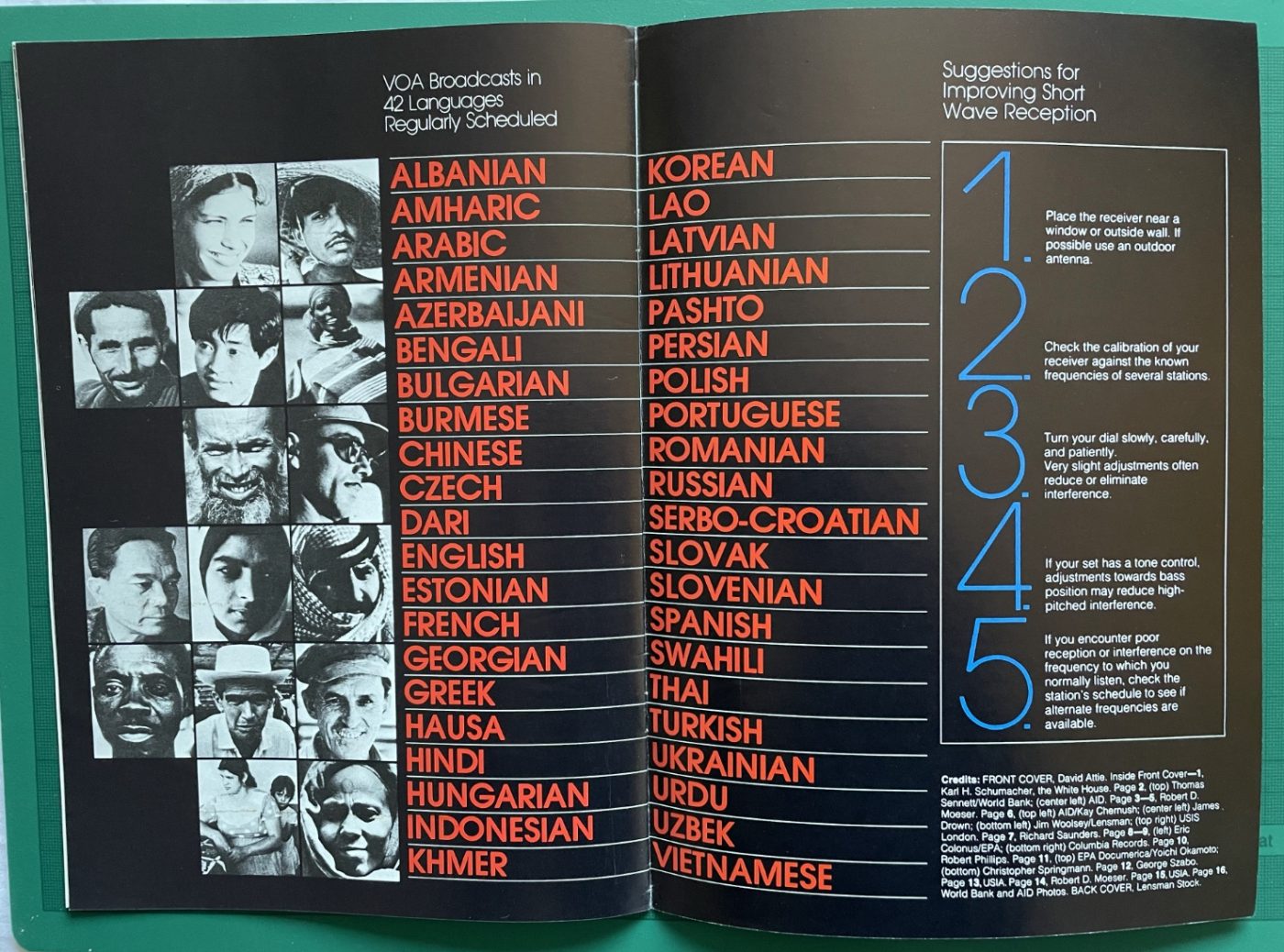
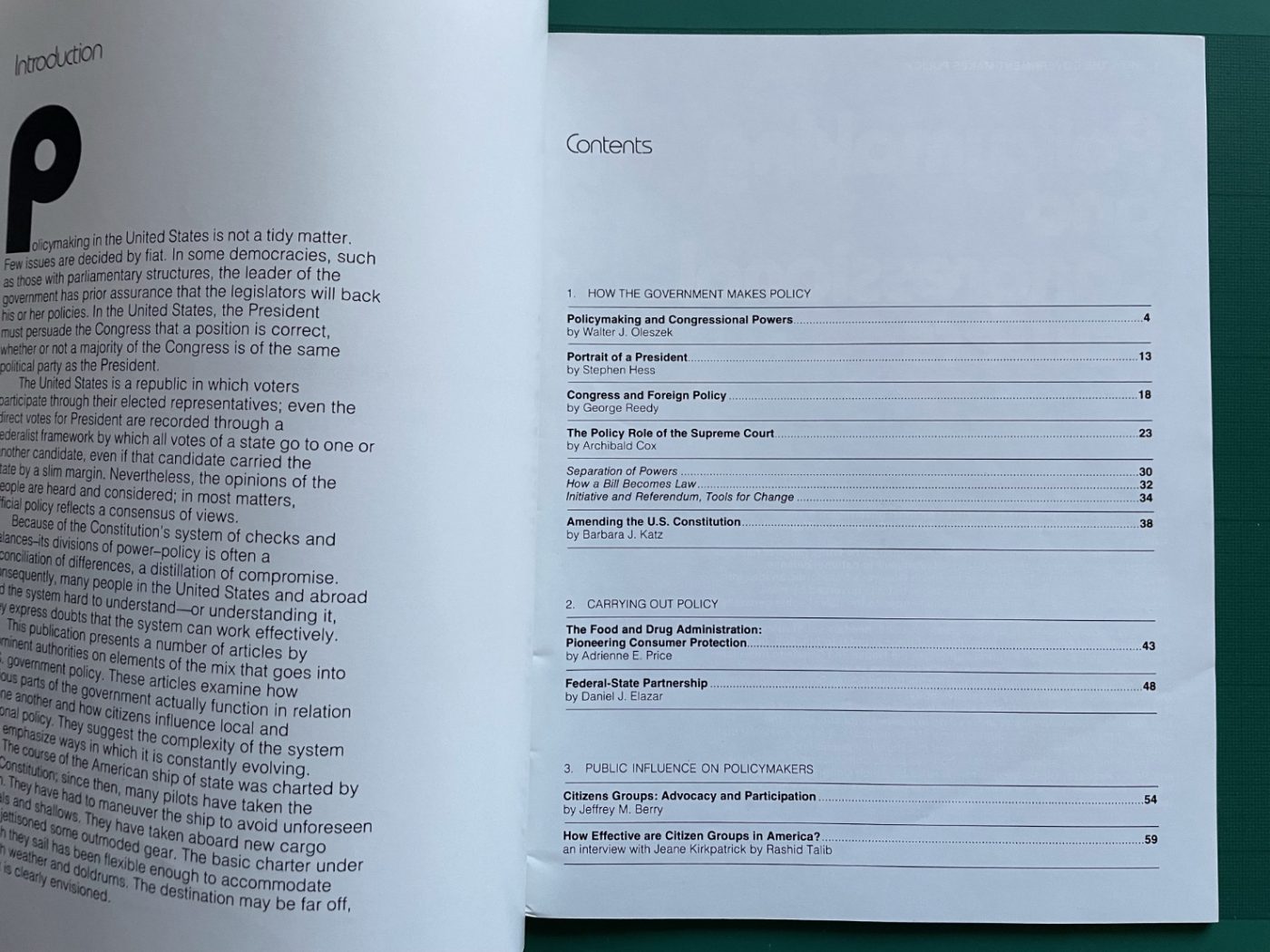
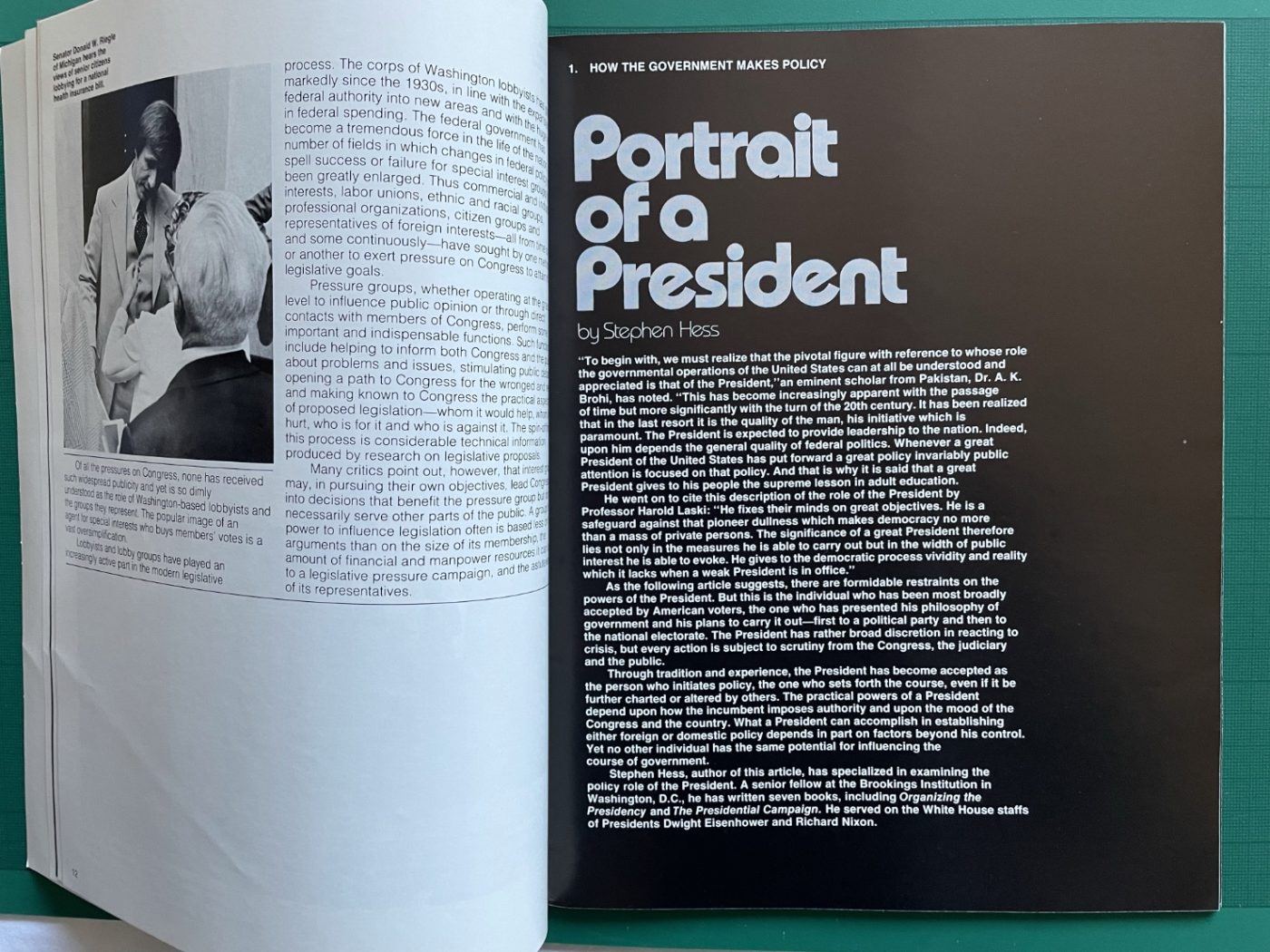


That main image of the VOA magazine with the blue- and red-dominated graphic brings back 40-year-old memories. I have that exact publication in a box somewhere from 1983-1984. I was a relatively new teen DXer and, because we were going on a family trip to D.C. in summer 1984, I convinced my parents we HAD to take the VOA studios tour, which we did. I can’t remember if my great-uncle, who would eventually work for VOA Europe, helped us set that up or if he was still a news reader for WTOP at the time.
Anyway, it always interested me how VOA presented our country to the rest of the world. Between that and listening to Radio Moscow, Radio Berlin International, etc., I’m sure it helped influence me into minoring in Cold War history just about the time the USSR dissolved.
Excellent post . . . and thanks for referencing my post!
Great write-up about one of the peak periods of SWL activity.
My treasure [in late 70’ies] was a heavy, large sized, hardbound book by Deutche Welle, sent to us who accepted a ‘monitoring’ task for their shortwave broadcasts: The Castles of Germany…
I still have that lovely volume of a book in my library somewhere and miss the times when shortwave was more valuable to all involved.
Very nice overview of a VOA publication. Growing up listening to shortwave, I never actually got around to getting any VOA materials. I did get many many publications from a couple dozen countries (even once to display all of them to my eighth-grade classmates). Every country tried to send the very best of what they considered a positive view of their country. Basically, ALL of it is propaganda of some kind. Radio Australia sent copious and large sized booklets about the country and wildlife. (Communist) Radio Polskie sent all kinds of travel brochures, especially ones with young cute blond Polish women in traditional dress. Radio Norway sent very scenic QSL cards. And of course, Happy Station contributed to the pile with a variety of station news and country initiatives in the Netherlands. ALL of it was fun, unique, and positive. Never, ever would any item mention any downside to their country.
It would be interesting to compare then with now!
They still claim 40 languages
https://www.voanews.com/a/voa-around-the-world/4113370.html
It should be remembered that whilst they have streaming available, in some of the target countries the Governments can cut off the internet, where as it is much more difficult to jam high frequency broadcasts.
The Cuban service is also transmitted in Digital Radio Mondiale which is good at rejecting interference and noise.
Great post!
Listening to VOA on a home-made short wave radio growing up in the UK was a big part of my childhood (and a major reason why I’m now an American citizen).
I also remember getting tons of interesting information on the US when they sent me their frequency schedule, including a ruler I still have with a list of all the US Presidents and the dates they were in office (of course it’s a little out of date now).
Can still hear the voices of some VOA broadcasters in my head, especially Willis Conover’s hosting VOA Jazz Hour.
Great memories…